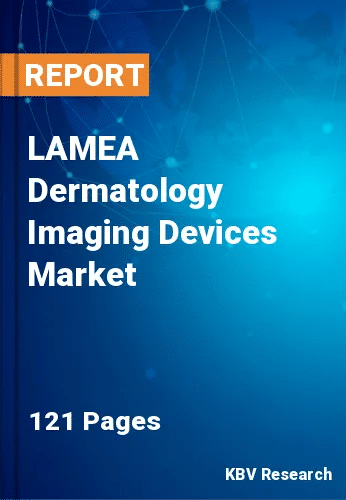
The Latin America, Middle East and Africa Dermatology Imaging Devices Market would witness market growth of 15.2% CAGR during the forecast period (2023-2030).
The Brazil market dominated the LAMEA Dermatology Imaging Devices Market by Country in 2022, and would continue to be a dominant market till 2030; thereby, achieving a market value of $108.3 million by 2030. The Argentina market is showcasing a CAGR of 15.8% during (2023 - 2030). Additionally, The UAE market would register a CAGR of 14.8% during (2023 - 2030).

Multispectral imaging devices capture images at various wavelengths, allowing for a more comprehensive assessment of pigmentation and vascular patterns. This is especially relevant in differentiating various skin lesions and contributes to a more accurate diagnosis. It empowers patients by involving them in the diagnostic process. Patients can visually understand their skin conditions, making comprehending the need for specific interventions or lifestyle changes easier. This engagement fosters a collaborative approach to dermatological care.
Furthermore, the integration of artificial intelligence is a transformative trend in the market. AI algorithms are employed to analyze dermatological images, assisting healthcare professionals in detecting and diagnosing skin conditions. Machine learning models trained on vast datasets contribute to improved accuracy and efficiency in identifying abnormalities and supporting clinical decision-making. There is a noticeable shift towards portable and handheld dermatology imaging devices. Compact and handheld devices offer increased flexibility, enabling healthcare professionals to conduct examinations in various settings, including remote locations. This trend aligns with the growing demand for point-of-care diagnostics and facilitates convenient on-the-go assessments.
There is a growing emphasis on early detection and prevention of melanoma in the LAMEA region. Dermatology imaging devices are vital in identifying suspicious moles or lesions early, enabling timely intervention and improved patient outcomes. Ongoing clinical research and validation studies in the LAMEA region validate the efficacy of dermatology imaging devices for melanoma detection. The adoption of telemedicine in the LAMEA region has increased access to dermatological services. Dermatology is increasingly recognized as an integral component of healthcare in the LAMEA region. Increasing awareness of preventive dermatology practices encourages individuals to seek early diagnosis and treatment for skin disorders in LAMEA. Thus, due to these aspects, the dermatology imaging devices market will expand across the LAMEA region in upcoming years.
Free Valuable Insights: The Worldwide Dermatology Imaging Devices Market is Projected to reach USD 5.4 Billion by 2030, at a CAGR of 12.5%
Based on End-use, the market is segmented into Hospitals, Dermatology Centers, and Specialty Clinics. Based on Modality, the market is segmented into Dermatoscope, Digital Photographic Imaging, Optical Coherence Tomography (OCT), High Frequency Ultrasound, and Others. Based on Application, the market is segmented into Skin Cancers, Inflammatory Dermatoses, Plastic & Reconstructive Surgery, and Others. Based on countries, the market is segmented into Brazil, Argentina, UAE, Saudi Arabia, South Africa, Nigeria, and Rest of LAMEA.
By End-use
By Modality
By Application
By Country
Our team of dedicated experts can provide you with attractive expansion opportunities for your business.
